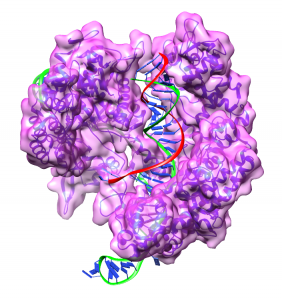CRISPR gene editing technology has been called “the biggest biotech discovery of the century”, “the biggest game changer to hit biology since PCR” and even “the Genesis Engine”. In the beginning of 2013 it became apparent that this technology can be used to manipulate human cells which caused a rapid uptake of CRISPR methods in research, helped a few CRISPR-based start-ups to raise a fortune in venture capital and inevitably started a patent war between MIT and UCLA.
What excites venture capitalists is the possibility of using CRISPR to treat genetic diseases.

The gene editing method called CRISPR-Cas9, developed from the basic knowledge of the system’s mechanism, essentially tricks the cell into cutting strands of genomic DNA at a precise spot and then replaces, changes or disables a gene. The method involves expressing the Cas9 endonuclease along with a guide RNA (sgRNA), directing the Cas9 to a particular gene and introducing a double-strand break in the DNA. The cell repairs the damage, but usually creates small insertions or deletions that inactivate the gene. CRISPR components can be expressed in cells by introducing their genes by transgenesis using a viral vector system or by delivering the Cas9-sgRNA complex produced in cell lines using a nanoparticle delivery system.
CRISPR-Cas9 tricks the cell into cutting strands of genomic DNA at a precise spot and then replaces, changes or disables a gene.
What excites most scientists and venture capitalists is the possibility of using CRISPR to treat genetic diseases such as Huntington’s disease and muscular dystrophy. On the other hand, it also enables tinkering with genes of our progeny which as some argue could lead to the “designer baby“ scenario seen in the movie Gattaca. That’s not science fiction anymore, since Chinese researchers have already edited a gene in human embryos using CRISPR.
Of course, it could be the case that CRISPR is getting overhyped. After all, it is just a technique with many proof-of-principles and we’ll have to wait a few years for first products to hit the market. There is no guarantee that another technique that is cheaper, better or faster than CRISPR will not be discovered in near future and replace it the same way that CRISPR has replaced other gene-editing techniques, such as TALENs and zinc fingers. Until then, CRISPR definitely will stay hot as fire.
Original articles published by:
- The Washington Post: Everything you need to know about why CRISPR is such a hot technology
- Wired: Easy DNA Editing Will Remake the World. Buckle Up.
By Marko Petek, PhD, BioSistemika LLC











